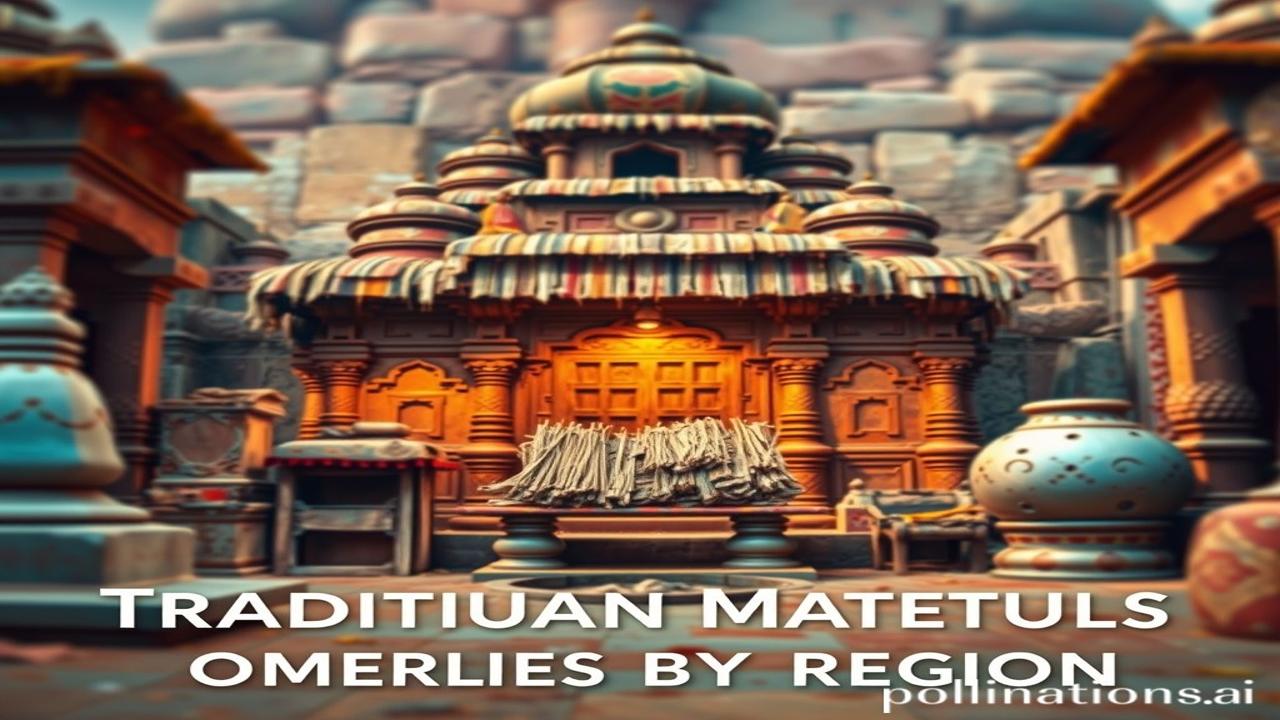Waqt Ki Deewaron Mein Chhupe Raaz: Traditional Construction Materials By Region
Kabhi socha hai, jo purani haveliyan aur mandir hum dekhte hain, woh kis mitti, kis pathar se bane hain? Unki deewaron mein sirf eent nahi, balki hamare itihas aur sanskriti ki kahaniyan bhi chhipi hain. Waqt ki dhool mein kuch aise hi raaz dafan hain, jinhe aaj hum khojne niklenge. Let’s explore the incredible world of traditional construction materials across different regions of India!
Itihasik Prasthabhumi: A Glimpse Into India’s Architectural Heritage
Traditional construction materials are not just ‘things’ used to build houses. They are the heart and soul of our heritage. Har region ki apni uniqueness hai, reflected in the materials they used.
- When & Where?: This tradition spans thousands of years, dating back to the Indus Valley Civilization (3300-1700 BCE). Imagine Mohanjodaro ki eentein! From the mighty Himalayas to the sunny coasts of South India, each region developed its own style and material preference.
- Why is it Important?: Traditional materials are important because they’re locally sourced, sustainable, and climate-responsive. They’re a testament to our ancestors’ knowledge and ingenuity. These materials tell stories of innovation, adaptation, and deep connection with nature.
Zameeni Sach – Log Aur Jeevan: Building Lives With Earth and Stone
Imagine a Rajasthani artisan, chisel in hand, carving intricate designs into sandstone. Or a Kerala fisherman building his house with laterite stones, perfectly suited for the humid climate.
“Are, yeh pathar nahi, yeh toh humari dharti maa ka hi tohfa hai,” says an old craftsman in Rajasthan, his hands rough and weathered. “Isi pathar se humne mandir banaye, ghar banaye, aur apni peedhiyon ko surakshit rakha.”
Ma Rukmini ne aaj naye kapde pehne, kyunki mandir mein ek naya dwar ban raha tha. The air was filled with the smell of freshly cut wood and the rhythmic tapping of hammers. The vibrant colors of her sari mirrored the colorful murals being painted on the temple walls.
The choice of material wasn’t just about availability; it was about understanding the environment. Bamboo in Assam for earthquake resistance, mud in Gujarat for thermal insulation – each choice reflected a deep understanding of nature’s rhythm.
Region-Wise Breakdown:
- Himalayan Region: Timber (Devdar, Pine), Stone (Slate) – Resistant to cold and earthquakes.
- Indo-Gangetic Plains: Mud, Brick, Wood – Easily available and cost-effective.
- Rajasthan: Sandstone, Marble, Limestone – Providing beauty and durability in the desert climate.
- Deccan Plateau: Basalt, Granite – Strong and resistant to weathering.
- Coastal Regions (Kerala, Goa): Laterite, Bamboo, Coconut Wood – Ideal for humid and rainy conditions.
Dharohar Aur Pehchan: Echoes of the Past in Modern India
Today, we see glimpses of these traditional materials in eco-friendly housing, heritage conservation, and even contemporary architecture. The use of local materials reduces carbon footprint, supports local economies, and connects us to our roots.
Bharatiyata, or Indianness, is deeply embedded in these traditions. The use of specific materials is tied to rituals, religious beliefs, and community practices. For example, the auspiciousness of using specific types of wood in building a home, or the symbolic significance of certain stones in temples.
Mazedar Tathya Ya Bhram-Bhanjak: Fun Facts and Myth Busters
- Myth: Modern construction is always superior to traditional methods.
- Reality: Traditional materials, when used correctly, can be incredibly durable and sustainable. The Ajanta caves, carved out of basalt rock centuries ago, stand as a testament to this fact.
- Fun Fact: The famous stepwells of Gujarat and Rajasthan (like Rani ki Vav) are intricate examples of stone masonry that also served as water management systems!
Drishya Aur Bhavnayein: The Smell of Earth, The Touch of Stone
Imagine standing in a courtyard made of cool, smooth marble. The air smells of jasmine and freshly baked bread. The sounds of children playing and the distant chanting from the temple fill the air.
Think of touching the rough surface of a sandstone wall in Rajasthan, feeling the heat radiating from the stone under the scorching sun. The sight of vibrant colors reflecting off the polished stone fills you with a sense of awe.
These are the sensory experiences that connect us to the past and remind us of the ingenuity of our ancestors.
Antim Vichar Ya Uddharan: A Deep Dive Into The Wisdom
“Vasudhaiva Kutumbakam – The world is one family.”
This ancient Sanskrit phrase encapsulates the idea that our actions have a global impact. By embracing sustainable, locally sourced materials, we contribute to a healthier planet and preserve our cultural heritage for generations to come. Let us learn from the past to build a better future.
